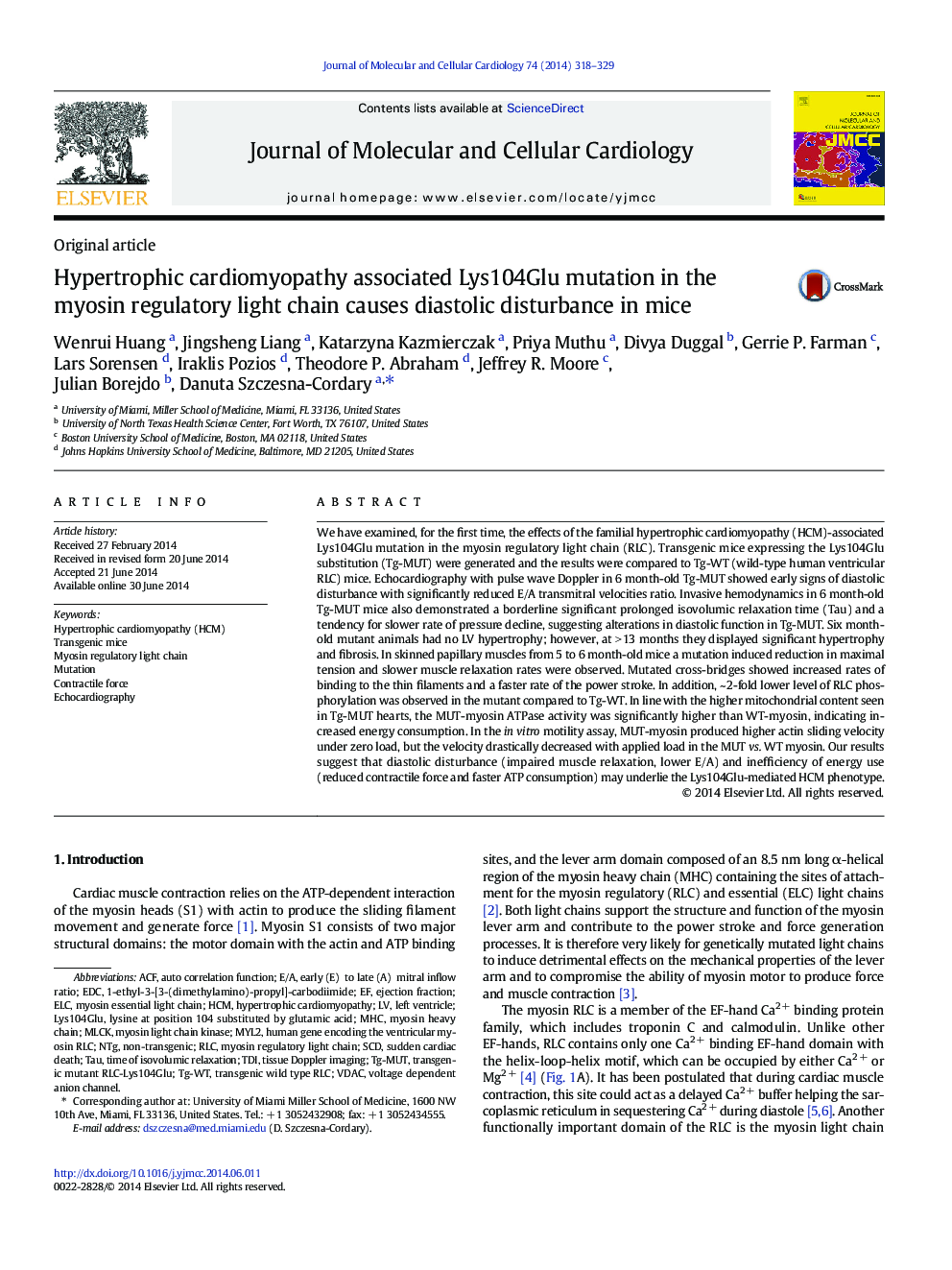| Article ID | Journal | Published Year | Pages | File Type |
|---|---|---|---|---|
| 8474773 | Journal of Molecular and Cellular Cardiology | 2014 | 12 Pages |
Abstract
We have examined, for the first time, the effects of the familial hypertrophic cardiomyopathy (HCM)-associated Lys104Glu mutation in the myosin regulatory light chain (RLC). Transgenic mice expressing the Lys104Glu substitution (Tg-MUT) were generated and the results were compared to Tg-WT (wild-type human ventricular RLC) mice. Echocardiography with pulse wave Doppler in 6Â month-old Tg-MUT showed early signs of diastolic disturbance with significantly reduced E/A transmitral velocities ratio. Invasive hemodynamics in 6Â month-old Tg-MUT mice also demonstrated a borderline significant prolonged isovolumic relaxation time (Tau) and a tendency for slower rate of pressure decline, suggesting alterations in diastolic function in Tg-MUT. Six month-old mutant animals had no LV hypertrophy; however, at >Â 13Â months they displayed significant hypertrophy and fibrosis. In skinned papillary muscles from 5 to 6Â month-old mice a mutation induced reduction in maximal tension and slower muscle relaxation rates were observed. Mutated cross-bridges showed increased rates of binding to the thin filaments and a faster rate of the power stroke. In addition, ~Â 2-fold lower level of RLC phosphorylation was observed in the mutant compared to Tg-WT. In line with the higher mitochondrial content seen in Tg-MUT hearts, the MUT-myosin ATPase activity was significantly higher than WT-myosin, indicating increased energy consumption. In the in vitro motility assay, MUT-myosin produced higher actin sliding velocity under zero load, but the velocity drastically decreased with applied load in the MUT vs. WT myosin. Our results suggest that diastolic disturbance (impaired muscle relaxation, lower E/A) and inefficiency of energy use (reduced contractile force and faster ATP consumption) may underlie the Lys104Glu-mediated HCM phenotype.
Keywords
VDACHypertrophic cardiomyopathy (HCM)MLCKAuto correlation functionHCMEDCNTGELCTDIRLCACFSCDE/Aechocardiographyleft ventricleTissue Doppler imagingmutationTauMyosin essential light chainmyosin regulatory light chainMyosin heavy chainmyosin light chain kinasenon-transgenicMHCSudden cardiac deathTransgenic miceContractile forceHypertrophic cardiomyopathyvoltage dependent anion channelejection fraction
Related Topics
Life Sciences
Biochemistry, Genetics and Molecular Biology
Cell Biology
Authors
Wenrui Huang, Jingsheng Liang, Katarzyna Kazmierczak, Priya Muthu, Divya Duggal, Gerrie P. Farman, Lars Sorensen, Iraklis Pozios, Theodore P. Abraham, Jeffrey R. Moore, Julian Borejdo, Danuta Szczesna-Cordary,
